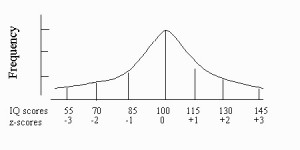A link function in a Generalized Linear Model maps a non-linear relationship to a linear one, which means you can fit a linear model to the data.
More specifically, it connects the predictors in a model with the expected value of the response (dependent) variable in a linear way.
The link function connects the random and systematic (non-random) components of a GLM: the random component specifies a probability distribution for X|Y while the systematic component relates a parameter η to predictors (inputs) X. The link function “links” these components [1].
Examples of Link Function
The link function for linear regression is the identity function. An identity function maps every element in a set to itself. In other words, the linear model directly predicts the outcome. Other regressions use different link functions to transform the data.

Other examples of link functions include the log, logit, reciprocal, and probit. Which link function you use depends upon what analysis you’re performing.
Some common link functions and their uses:
| Distribution | Support | Link name | Link function |
| Bernoulli | Integers: {0, 1} | Logit | XΒ = ln(μ / 1 – μ) |
| Binomial | integers: {0, 1, …, N} | Logit | XΒ = ln(μ / n – μ) |
| Normal Distribution | real: (-∞, ∞) | Identity | XΒ = μ |
| Exponential Distribution | real: (0, ∞) | Negative inverse | XΒ = -μ-1 |
| Gamma Distribution | real: (0, ∞) | Negative inverse | XΒ = -μ-1 |
| Poisson Distribution | integers: 0, 1, 2, … | Log | XΒ = ln(μ) |
References
Generalized Linear Models: Advanced Methods for Data Analysis (36-402/36-608). Spring 2014. Retrieved April 19, 2021 from: https://www.stat.cmu.edu/~ryantibs/advmethods/notes/glm.pdf